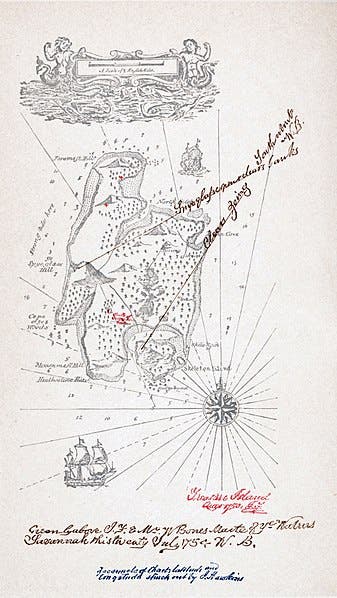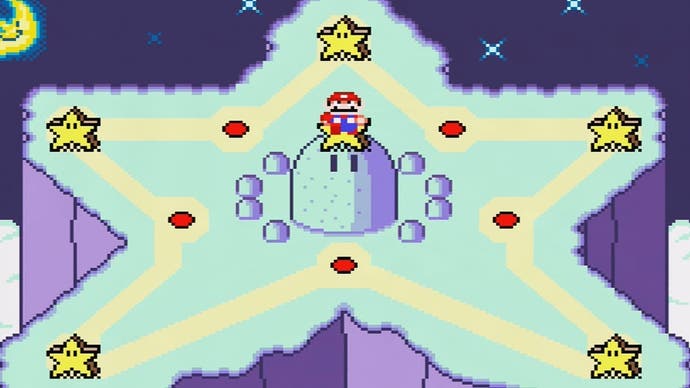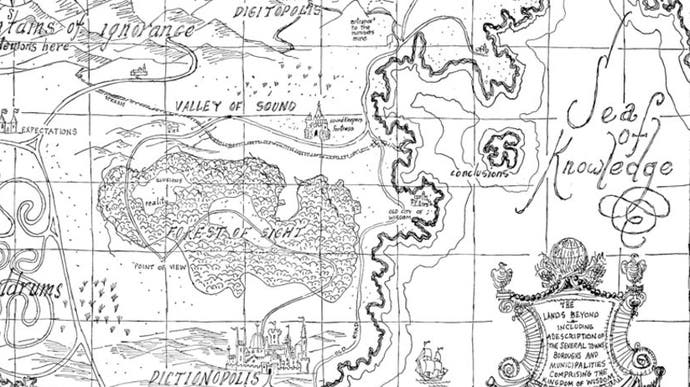The Dictionary of Imaginary Places complicates the idea of a fantasy location
Map quest.
When I was in my early teens, I drew my first and only map. Final Fantasy 9 had just come out and I decided I was going to make a Final Fantasy, so it would be best to come prepared. I estimated at what age I'd be old enough to start working at Square Enix and determined the number of my Final Fantasy that way - and so began my work on Final Fantasy 13. You will note that while I made an accurate estimate about the release schedule of future Final Fantasy games, I did not end up making Final Fantasy 13, but that's a story for another time. I had a world to make, and worlds had maps. Every game I played had one for its overworld and every book I read then proudly displayed a map on its opening pages. A map set the stage for reader and writer both.
When I drew my world map however, I didn't think about it in terms of what I wanted, but in terms of what I felt a map should have. Landmasses large and small, island archipelagos, some yellow deserts and grey mountainous areas. Rivers sneaking through a country before reaching the sea. Red dots representing villages and cities. I took great care in ensuring that the map had all these things, but I didn't think about my creations further than that. Towns were there so you had inns to rest at, mountains acted as gates so my heroes would have to acquire an airship to continue their journey. Real places however, are more than that.
The Dictionary of Imaginary Places by Alberto Manguel and Gianni Guadalupi is a 755-page book that turns the dots on a map into places with a historian's care. At first I found it almost odd you would make a dictionary of make-believe. Dictionaries to me always were these big, dry things I lobbed around prior to smartphones to look up the things I needed for work - filmography terms for essays and Japanese vocabulary - and the process of looking up something wasn't supposed to be fun, it was supposed to be a quick, efficient action allowing me to continue my real work.

This dictionary doesn't function that way at all, mostly because I have never found myself in a situation where I needed to look up The City of Stupidity or The Palace of Cracked Heads. I didn't even know they existed. To say "existed" is funny in this context, because they don't, do they. These are places someone created as part of a larger whole, as part of stories, many of them from the early 20th century, that I had never heard of. But the scientific approach of the dictionary makes them feel real, because a dictionary presumes nothing. It simply describes what's there, matter-of-factly. Humans have hearts and brains and The Lonely Mountain is home to the dwarves.
In reality, things are never quite that simple. After I mused about whether or not video games could work as time machines, I received a very cross message from a colleague warning me of the dangers of such an approach. Each digital facsimile of a real place is just a fantasy, created from one specific point of view with a specific intended use, they told me, and it's dangerous to accept a single depiction as accurate. I get it - It's a diorama of a place, inextricably linked to the thoughts and feelings of the person who made it. It's a critic's point of view, and it's important in my work, but I'm bringing this up because the world as I know it already is a second-hand story for the most part.
I don't know much of the world, and I think that's what makes it so easy for me to accept fantasies - so much of the world sounds like a fantasy to me, reaching me through the artificial filters of Instagram photos, movies and just plain hearsay. When I was a child, my family didn't travel, but I went to a school with kids and teachers who sometimes travelled four times a year. I heard stories of ski holidays at villages built into mountain slopes, places where after flinging themselves down a mountain face for "sport", children could get as much hot chocolate as they wanted. A classmate of mine once said that "after you've seen the pyramids a few times, they're really not all that", and our geography teacher would run slideshows of his holidays in Calcutta, pointing at the filled streets in the images while telling us you had to hold onto your luggage lest kids would grab it and then make you pay them for carrying it for you.

In short, every story I heard seemed completely and utterly fake. I never learned any real-world history about these places, because high school history is preoccupied with teaching you your own history only, so for all I know they have rivers of hot chocolate in Austria somewhere. A map tells you where things are, because someone noted them down in blue and green and brown, but no drawing in the world, no second-hand account or even a photograph could ever prepare me for the real thing. I'm still helpless in the face of the ocean, simply because there is so much of it. The first time I saw a mountain up close, the whole tall, snow-tipped craggy expanse of it, I nearly wept - I just couldn't believe my eyes. (Later I wept because this was on a school-mandated skiing trip and I after going up all the way I was apparently supposed to somehow get down using two narrow strips of wood, a proposition that went very badly for everyone involved.)
The point is that I don't think the existence of Oz or a mountain in China housing the Gods is completely fantastical, but it's their presumed existence, and the detail with which they are described, that makes me believe in them. On a map, every place is the same, but in the real world, no mountain is like the other. No two cultures look at the world around us the same way, or even use them the same way, that's what makes the world, with all its conflicts and its beauty. Societies and their different points of view have created different places, and have used what the world has to offer in vastly different ways. Most writers whose works you find in The Dictionary of Imaginary Places had never seen the world past their own backyard, and so they built imaginary worlds atop a real one that, like it did to me, must have felt very fake to them. Like the world feels right now, observed once again only from my backyard.









